The Best Games of 2014…So Far

E3 has come and gone, leaving in its wake a whole lot of “2015”. Most of the titles announced at E3 won’t release until next year, leaving a lot of folks feeling disappointed. It’s a case of history repeating itself. The gaming industry has once again entered that doldrums it’s been in before.
Still, 2014 has seen some great games, and we here at SpawnFirst feel that’s worth celebrating. So some of the SpawnStaff got together and named some of our favorite games of the year so far. Here’s our list.


‘King’ Buddy Acker
@BuddyAcker
Senior Editor
I wasn’t looking forward to Dark Souls II. Both Demon’s Souls  and Dark Souls had kicked my ass and I wasn’t particularly fond of either. Then I saw that Dark Souls II had released in digital form on Xbox Live and I bought it before I even realized what I was doing. I cringed as I died the first time. But then something miraculous happened. I kept playing and completed it.
and Dark Souls had kicked my ass and I wasn’t particularly fond of either. Then I saw that Dark Souls II had released in digital form on Xbox Live and I bought it before I even realized what I was doing. I cringed as I died the first time. But then something miraculous happened. I kept playing and completed it.
I’m glad I did. Dark Souls II is my favorite Souls game yet. I never once got lost exploring Majula like I did navigating the hostile and unwelcoming lands of Boletaria and Lordran. I always felt as if Dark Souls II was handing me a fair fight instead of screwing me over often like the first two games did. I was hooked from start to finish. Dark Souls II is amazing and the best game of 2014 so far. I’ll be picking up Bloodborne as soon as it releases.


Tony Chavez
@blacknexus
Staff Writer
 every other Conduit on the planet to heroically abolish a wide-spreading radiation plague, his efforts are not only tarnished, but completely in vain. The Conduit gene survived, and anyone who has it is immediately shunned and hauled away as a “Bio-Terrorist”. Seattle in particular is on complete lockdown, held and under surveillance by the D.U.P (Department of Unified Protection) and their acting, concrete-powered Conduit leader Brooke Augustine… until one fateful afternoon, and an even more fateful prison break. Enter our new protagonist, Delsin Rowe, who after living the life of a graffiti-swinging street punk, walks right into the path of a Conduit shitstorm.
every other Conduit on the planet to heroically abolish a wide-spreading radiation plague, his efforts are not only tarnished, but completely in vain. The Conduit gene survived, and anyone who has it is immediately shunned and hauled away as a “Bio-Terrorist”. Seattle in particular is on complete lockdown, held and under surveillance by the D.U.P (Department of Unified Protection) and their acting, concrete-powered Conduit leader Brooke Augustine… until one fateful afternoon, and an even more fateful prison break. Enter our new protagonist, Delsin Rowe, who after living the life of a graffiti-swinging street punk, walks right into the path of a Conduit shitstorm.Infamous: Second Son is one of the best games of 2014 so far for a number of reasons. Its gameplay is tense and exhilarating, giving you that classic open world Infamous platforming, wall running, and power blasting action while tossing a few snazzy tricks up its sleeve. Its graphics are stellar, with Seattle and all of its landmarks and dingy alleyways coming to life with a number of eye-popping lighting and weather effects. The past games were occasionally smart-assed, and the humorous tone is still intact despite Second Son being the grittiest installment of the series thus far. Each of the main characters, from the neon-trailing Fetch to the digital angel-summoning Eugene, really come into their own by the time the credits are rolling up the screen. I’m more then eager to see where Delsin and company end up next.


Karl Dodds
@LegendaryKarlos
Staff Writer
Metal Gear Solid V: Ground Zeroes released earlier this year to quite a 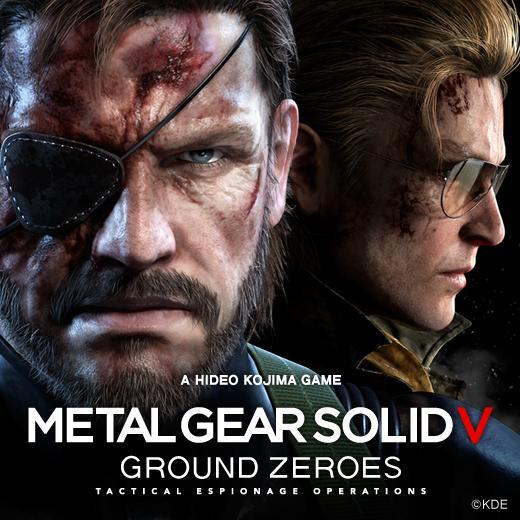 bit of controversy. Some people claimed it should have been released alongside The Phantom Pain in the same box, and others said the price was too high for a two hour (if that) campaign. I managed to get a copy for £20 on PS4 at launch and I have no regrets. It’s a nice sample of what’s to come in The Phantom Pain. It introduces players to the sandbox mechanic albeit on a much smaller scale. It also serves as a nice introduction to the new gameplay mechanics that will be prevalent in The Phantom Pain such as drivable vehicles, reflex mode, tagging enemies, and more.
bit of controversy. Some people claimed it should have been released alongside The Phantom Pain in the same box, and others said the price was too high for a two hour (if that) campaign. I managed to get a copy for £20 on PS4 at launch and I have no regrets. It’s a nice sample of what’s to come in The Phantom Pain. It introduces players to the sandbox mechanic albeit on a much smaller scale. It also serves as a nice introduction to the new gameplay mechanics that will be prevalent in The Phantom Pain such as drivable vehicles, reflex mode, tagging enemies, and more.
From now until The Phantom Pain releases any time I get a Metal Gear itch I can pop Ground Zeroes into my PS4 and wreck havoc in Camp Omega. As it stands I’ve spent far longer than two hours playing Ground Zeroes.. The extra ops it comes with kept me occupied long after I’d completed the main story. As much as I was disappointed about the voice actor switch from David Hayter to Kiefer Sutherland, I’d still have to pick Ground Zeroes as my game of the year so far.


Stephanie Downes
@MadeOfSquirrels
Staff Writer
For me, The Elder Scrolls Online is my game of the year. I’d been looking forward to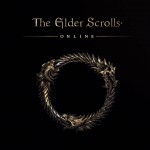 it since I’d heard about it (being an avid fan of the Elder Scrolls series) and when I got into the beta I can’t say that my delight was allayed. Even then, I had no idea how they were going to reconcile an Elder Scrolls game with the necessary features of an MMO—while it had all the necessary features (i.e. wide open spaces, big wars, races that really don’t like each other that much), I assumed that there would be a lot lost in translation.
it since I’d heard about it (being an avid fan of the Elder Scrolls series) and when I got into the beta I can’t say that my delight was allayed. Even then, I had no idea how they were going to reconcile an Elder Scrolls game with the necessary features of an MMO—while it had all the necessary features (i.e. wide open spaces, big wars, races that really don’t like each other that much), I assumed that there would be a lot lost in translation.
I was then pleasantly surprised when I turned my graphics up to Ultra (for about 10 seconds; my laptop started threatening divorce proceedings as soon as I tried) and the world blew me away in its intricacy and detail. Gameplay was like any other Elder Scrolls game—another thing that surprised me, how viable not having to lock onto enemies etc. was, and how it simply played like a multiplayer Skyrim with an action bar. And as for lore and plot—as a writer, the most important bit for me, as sad as that sounds—I could believe that I was in a living, breathing world. I love this game! (Now, when does my next lot of student finance come in…? I need another month!)


Alana Fearnall
@AlanaFearnall
Indies Lead Editor
Blizzard isn’t exactly known for their card games, but after a limited run with their  World of Warcraft Trading Card Game (TCG), Blizzard branched off into the card game sector again with Hearthstone.
World of Warcraft Trading Card Game (TCG), Blizzard branched off into the card game sector again with Hearthstone.
Like most card games Hearthstone is easy to understand and hard to master. The beautiful layout will win over anyone remotely interested in the game, with a drag and drop play style that every online TCG should envy.
Hearthstone‘s hero selection features popular characters from the World of Warcraft franchise, as well as memorable enemies featured in World of Warcraft. Each class has a different variety of cards that can only be used by them, bringing a great variety of decks into the game. Although it won’t satisfy the more extreme card players, Hearthstone should satisfy people who want a quick game on the go, with mobile and PC versions.


Sean Mesler
@N2NOther
Features Editor
While Wolfenstein: The New Order isn’t quite my favorite game of the year so far (that  would be Titanfall), it certainly is the most satisfying. I was fortunate enough to play the game last year at a pre-E3 event in Santa Monica (as well as interview the game’s director, Jens Matthies) and from my brief playtime with the game, I knew MachineGames was onto something special.
would be Titanfall), it certainly is the most satisfying. I was fortunate enough to play the game last year at a pre-E3 event in Santa Monica (as well as interview the game’s director, Jens Matthies) and from my brief playtime with the game, I knew MachineGames was onto something special.
Combining classic shooter mechanics such as health packs and armor pick ups, with “new school” controls—ADS, left stick to sprint, cover, etc.—The New Order represents the very best in console shooters. Coupled with a fantastic, very human, humorous story and over the top violence and gore, the game managed to not only live up to my expectations, but even exceed many other’s. For months other sites had written about how bad the game was from preview events and how it was going to be a waste of MachineGames’s collective talents only to have many of the same detractors echo what I was saying all along—The New Order is actually something special.


Brian O’Donnell
@bodweiser1
Staff Writer
Versus Mode Co-host
For me, there is one truly great and exciting game that I’ve been able to get my 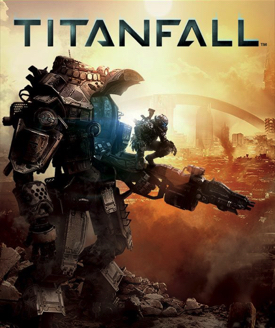 hands on this year, and that game is Titanfall. While it did have its flaws, like a sorry excuse for a campaign, it was a breath of fresh air into the very worn out competitive online multiplayer FPS community. Titanfall was ambitious: it changed the multiplayer dynamic, while still keeping things familiar. It’s borderline chaotic, but never crosses the line into being unreasonable or too much; its just the right level of madness.
hands on this year, and that game is Titanfall. While it did have its flaws, like a sorry excuse for a campaign, it was a breath of fresh air into the very worn out competitive online multiplayer FPS community. Titanfall was ambitious: it changed the multiplayer dynamic, while still keeping things familiar. It’s borderline chaotic, but never crosses the line into being unreasonable or too much; its just the right level of madness.
One of the best things about Titanfall is how fluid it is. Wall running down a corridor, dropping a Titan, shooting an enemy in the head, and then boarding that Titan you dropped happens in one beautifully orchestrated moment with little to no effort. Pulling off an amazing feet like that is made possible by the developers at Respawn putting a lot of time and effort into making Titanfall as easy to pick up as possible. Even the most novice of players can pick up the controls with ease and get right into the action, while veteran gamers barely need to change the way they play.
Another huge plus of Titanfall is how balanced everything is. No one weapon is more powerful than the others, and players on the ground still stand a chance taking on a Titan; it’s a harmonious system of checks and balances, which makes the all around experience of Titanfall great. So yes, Titanfall doesn’t have single player, and yes, the mulitplayer campaign is nothing more than matchmaking with people talking over coms, but that shouldn’t take away from the fact that Titanfall is a smooth, well-balanced, and imaginative game that is still as fun to play now as it was on the day it released. With that kind of playability, I’d say it’s well worth my money, time, and my vote for best game of the year thus far.


Chris Vellucci
@asticknstone
Staff Writer
Versus Mode Co-host
Mario Kart 8 is my game of the year (so far) not only because of the game itself, but also  the message tied with it. Nintendo has been doing less than spectacular in sales so far; they’re not doing poor, but they’re not doing incredible. With so much media crying doom and gloom for the Wii U console, this hard-hitting title is a solid rebuttal. In its opening weekend, Nintendo sold 1.2 million copies of Mario Kart 8 worldwide. Again, with all of the media saying “no one is buying the Wii U”, then who is buying 1.2 million copies in three days?
the message tied with it. Nintendo has been doing less than spectacular in sales so far; they’re not doing poor, but they’re not doing incredible. With so much media crying doom and gloom for the Wii U console, this hard-hitting title is a solid rebuttal. In its opening weekend, Nintendo sold 1.2 million copies of Mario Kart 8 worldwide. Again, with all of the media saying “no one is buying the Wii U”, then who is buying 1.2 million copies in three days?
The game itself is nothing short of fantastic. The controls are familiar so you’re able to jump right in and start racing on new tracks. New mechanics and items make this game a little more challenging than its Wii predecessor, giving the game greater longevity. The addition of replays on MKTV and better online support are great examples of how Nintendo gives gamers what they want. It’s also a beautiful thing when the media stops reporting on violence and video games and instead dedicates a segment to Luigi’s death stare. Mario Kart 8 is a reminder that games don’t have to be realistic and violent to be incredible.

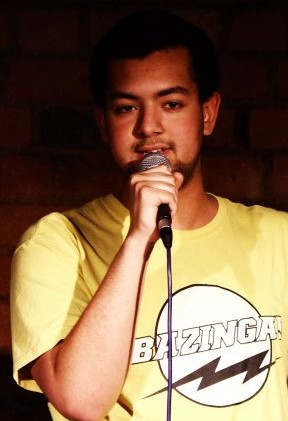
Reuben Williams-Smith
@R_WilliamsSmith
Staff Writer
I haven’t, for various reasons, bought many new games this year. A combination of bad timing,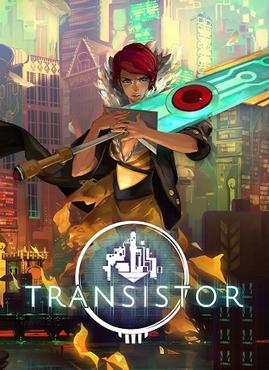 student debt, and general bad luck have meant I’ve needed to be extremely picky on the game front. So picky in fact that I haven’t bought any new games since the start of the year. None that is, except Transistor. I was a huge fan of the developers original title, a beautiful and entrancing little action-RPG by the name of Bastion, and even from the reveal and the original trailers Transistor promised something every bit as imaginative and exciting as it’s spiritual predecessor. Little did I know Transistor is oh so much more.
student debt, and general bad luck have meant I’ve needed to be extremely picky on the game front. So picky in fact that I haven’t bought any new games since the start of the year. None that is, except Transistor. I was a huge fan of the developers original title, a beautiful and entrancing little action-RPG by the name of Bastion, and even from the reveal and the original trailers Transistor promised something every bit as imaginative and exciting as it’s spiritual predecessor. Little did I know Transistor is oh so much more.
The trend of brown-grey military themed FPS games filled with sullen gruff white men is a gaming cliché made all the more annoying by its constant reaffirmation. In amongst all the Titanfalls and Wolfensteins, Transistor isn’t so much a breath of fresh air as a tornado of arctic wind. The game’s silent protagonist Red isn’t a soldier, or a mercenary, or any kind of macho hero type. She’s a singer, thrust into danger and peril and forced to fight for her life against the living computer virus known as the Process.
The game is composed of beautiful hand painted artwork, with Red running, leaping, and fighting with breathtaking fluidity. The score backs the visuals with some of the most genuinely lovely music I’ve heard in a game since Bastion, and the combat system is one of the best I’ve ever experienced, simple to understand but with a complexity that really does lend itself to any kind of playstyle, a claim often made but rarely as true as it is here. In short, Transistor is beautiful, brilliant, bewitching, and better than almost anything else I’ve played this year. If you only buy one game in 2014, make it this one.










